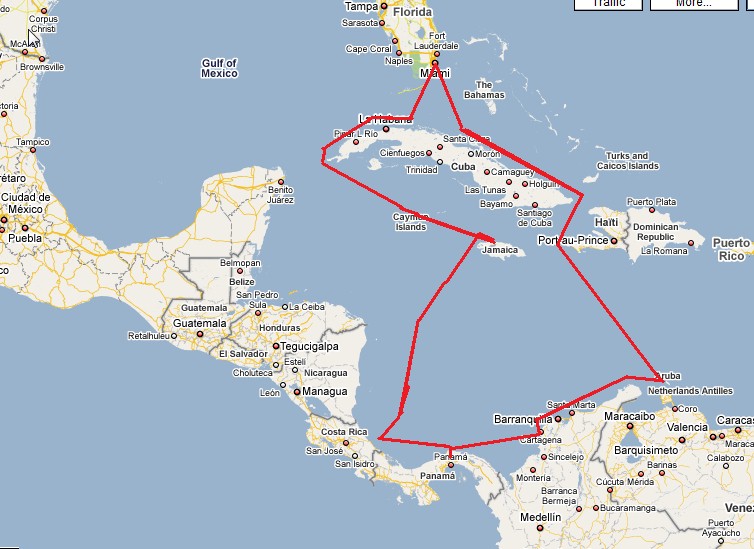
Caribbean & Panama Canal Cruise - November 2008
MS Jewel of the Seas - Royal Caribbean Lines

Itinerary
17 November 2008 - Depart Miami Florida bound for Oranjestad Aruba
20 November 2008 - Oranjestad, Aruba
21 November 2008 - Cartagena, Colombia
23 November 2008 - Transit Panama Canal
25 November 2008 - Montego Bay, Jamaica
26 November 2008 - George Town, Grand Cayman Island
28 November 2008 - Return to Miami Florida
20 November 2008 - Oranjestad, Aruba
We arrived early in the morning after two days at sea to a light rain. The ship had a presentation supposedly on Aruba but it turned out to be a shopping only thing. The lady, Lauren, had the women saying "I love diamonds" as she went through pitches for Diamonds International stores, emerald stores, tanzanite stores, etc. We left after a short time since it was obvious that the ship was trying to steer the travelers to their recommended stores (no doubt a kickback for them on travelers' purchases). We had signed up for a ship-sponsored trip on the submarine Atlantis. The town reminded me of Tijuana, Mexico with all the hustling for shopping. The submarine dive was the highlight of the Aruba visit.

Oranjestad from our stateroom balcony
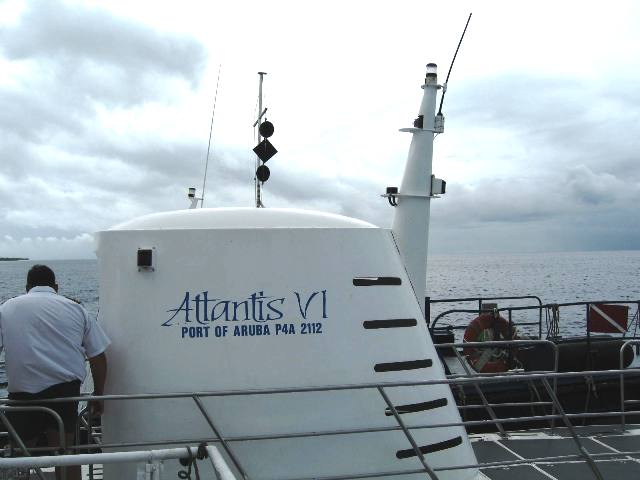

Atlantis conning tower and Marilyn departing Atlantis

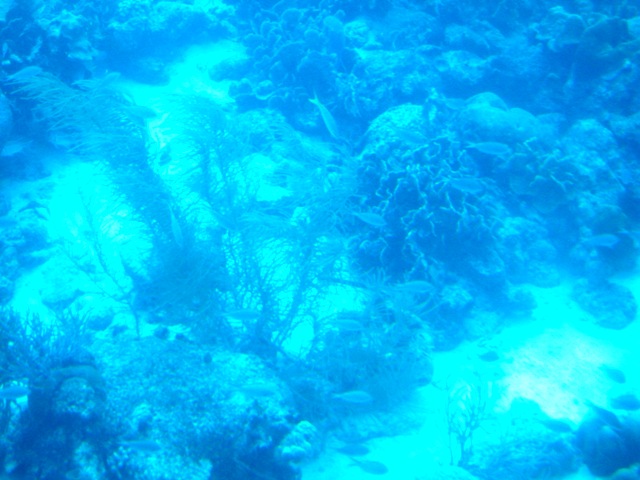
Interior of submarine as we dove, had all of us sitting on starboard side as sub was only half full. Sea bottom at about 30 feet.

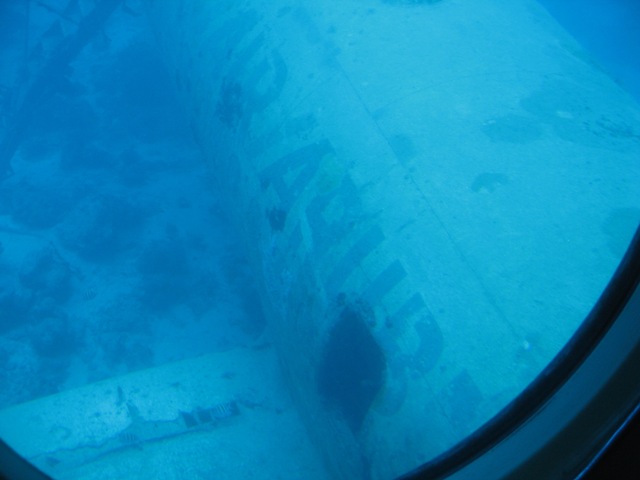
Sunken drug smuggler aircraft (left). Sunken Air Aruba airliner (right). These aircraft were intentionally sunk at about 70n feet down to create artificial reefs.

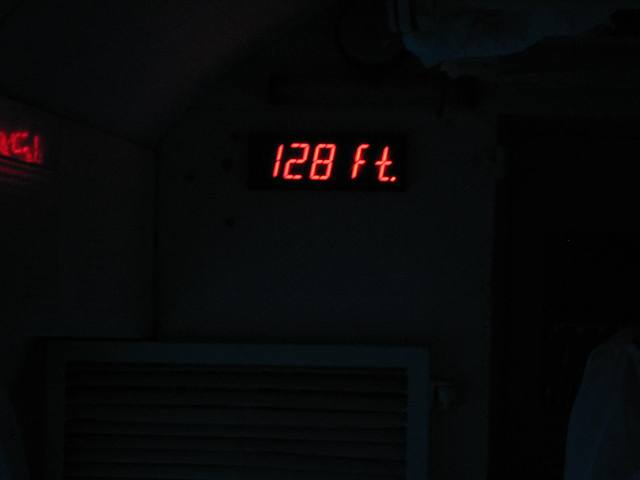
Depth indicators. Our maximum dive depth was 130 feet.
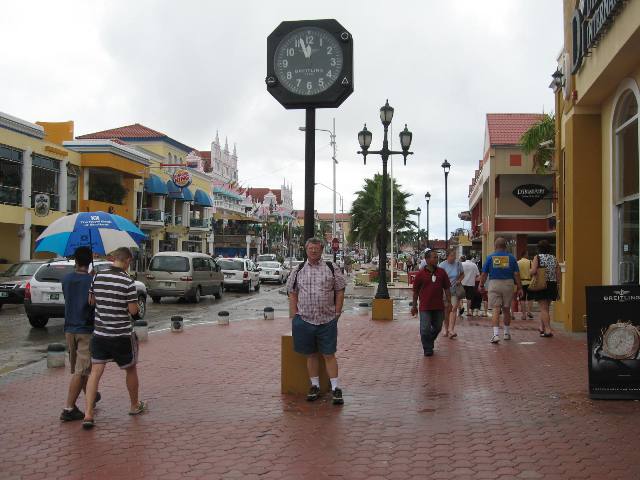
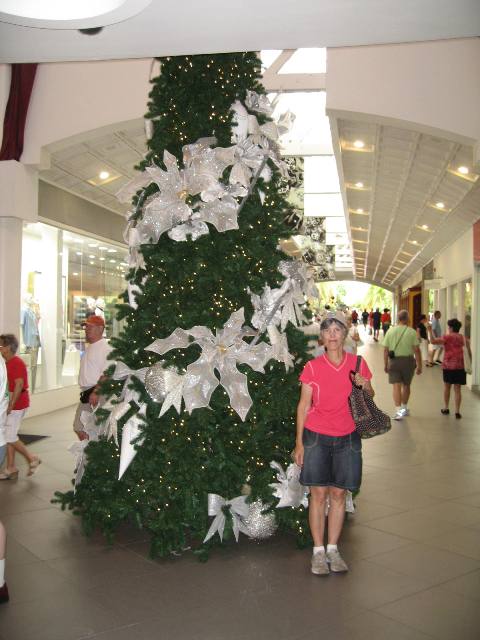
Phil on the main street. Marilyn at the Christmas tree in one of the (MANY) malls
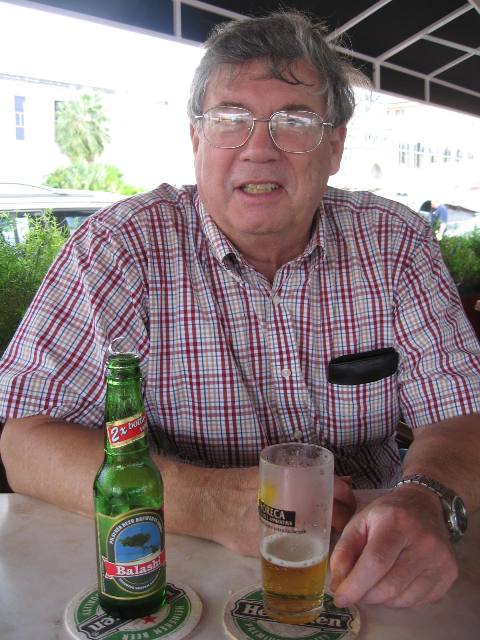
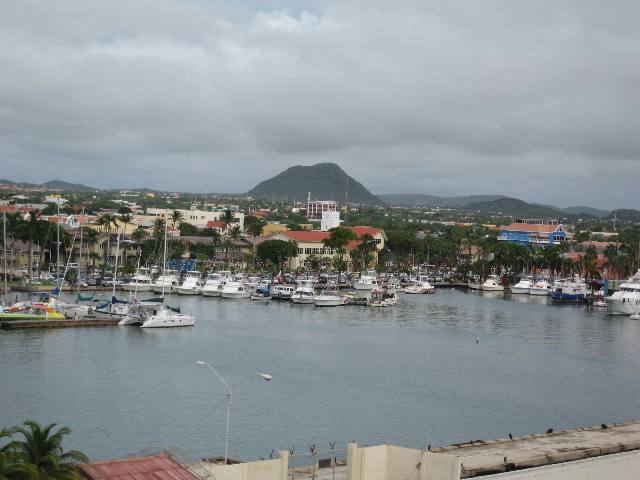
Phil enjoying the local beer Balashi. Scene from ship as we were departing (in dry weather!)
22 November 2008 - Cartagena, Colombia
We arrived in in Cartagena early in the morning. Cartagena is a very historic and interesting port. The city's official name is Cartagena de Indias (to distinguish it from Cartagena, Spain). The city was founded by the Spanish in 1533. The city was plundered many times by French and English pirates. Sir Francis Drake actually took the city and even though the Spanish ransomed the city for 107,000 Spanish milled dollars. He destroyed a large part of the city including the cathedral. This caused the Spanish to erect several fortifications and a thick wall to protect the port and city.
We signed up for a tour of historic Cartagena. The main fortification is San Felipe de Barajas named in honor of Spain's King Philip IV. Construction took 208 years, and ended with some eleven kilometers of walls surrounding the city. The city was safe from attack.
The port was a major point in Spain's movement of gold and silver from its South American mines. The bullion was loaded on galleons bound for Spain via La Habana, Cuba.
The Spanish Inquisition was practiced here to protect the Church against its attackers. The Inquisition was in force until the final Spanish defeat and the establishment of the Republic. The Inquisition Palace was one of the stops we visited on our tour. Many of the torture implements were on display.

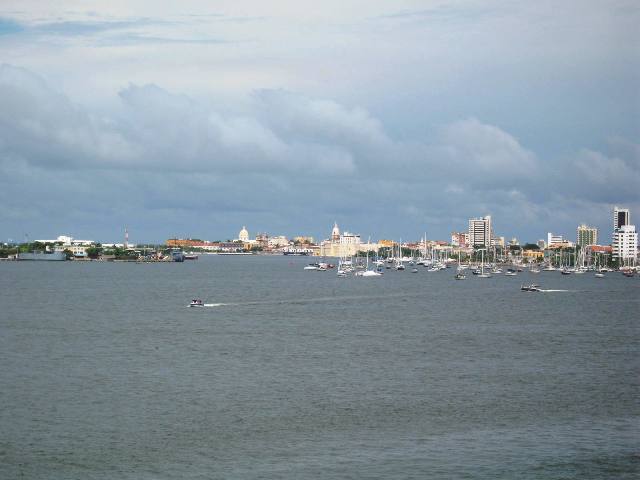
San Jose de Bocachica Fort at entrance to the harbor. Cartagena from the ship
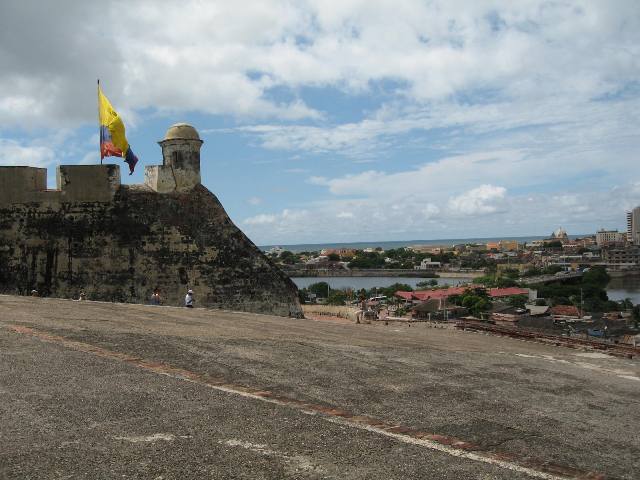
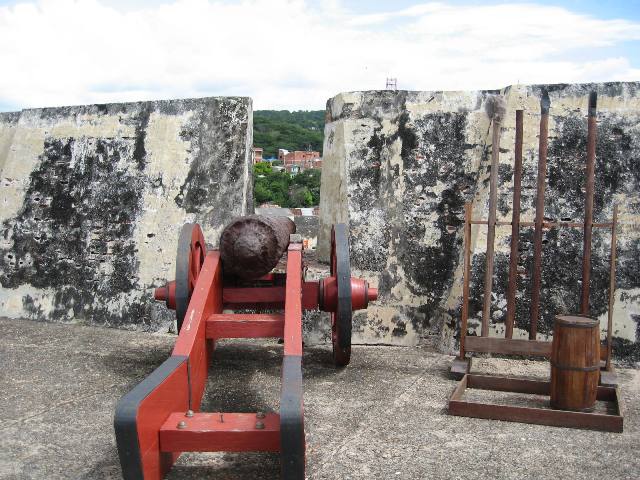
San Felipe de Barajas fortress
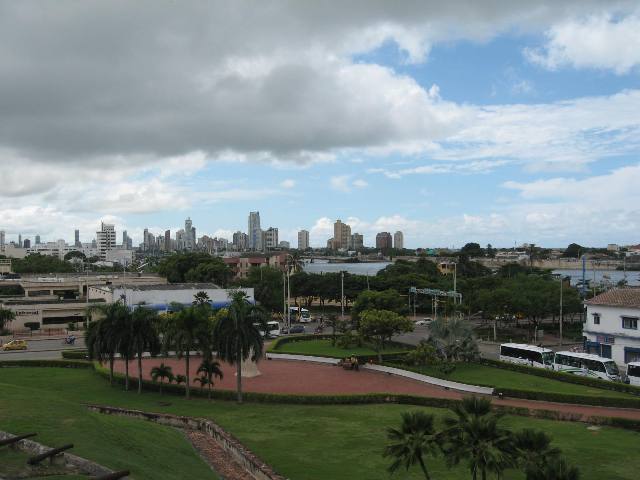
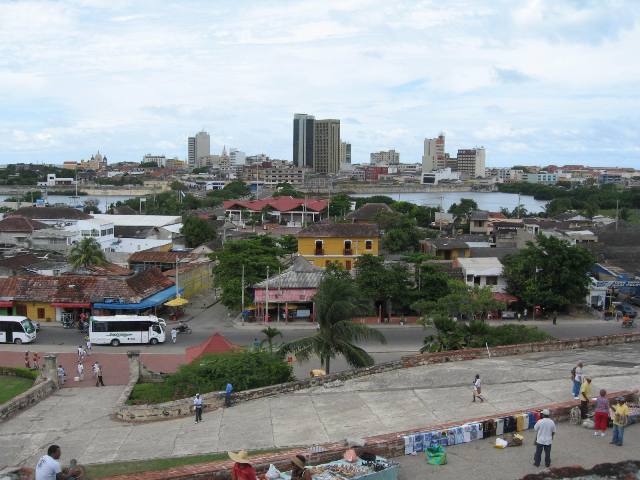
Cartagena from San Felipe de Barajas fortress
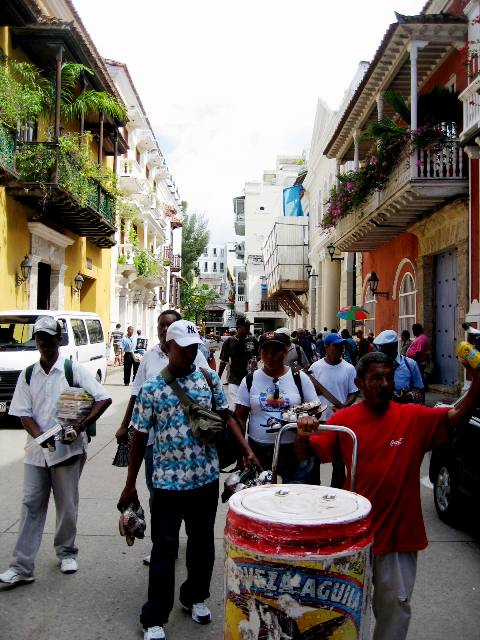
Street scene with vendor selling Cerveza Aguila

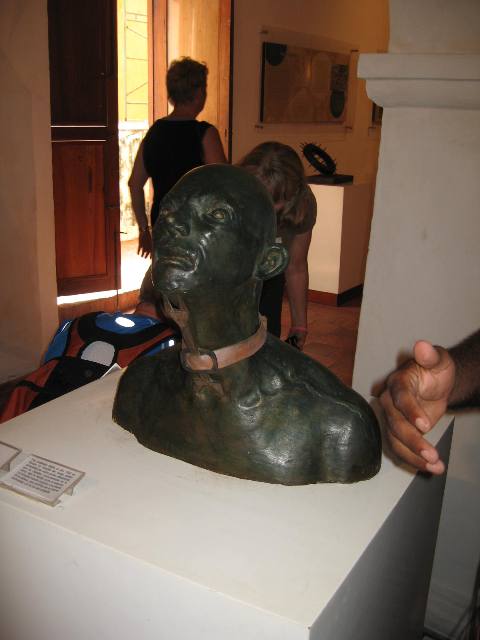
Palacio de la Inquisicion. At right a torture collar with a fork against the chin which would be nasty if you tired of keeping your head up!

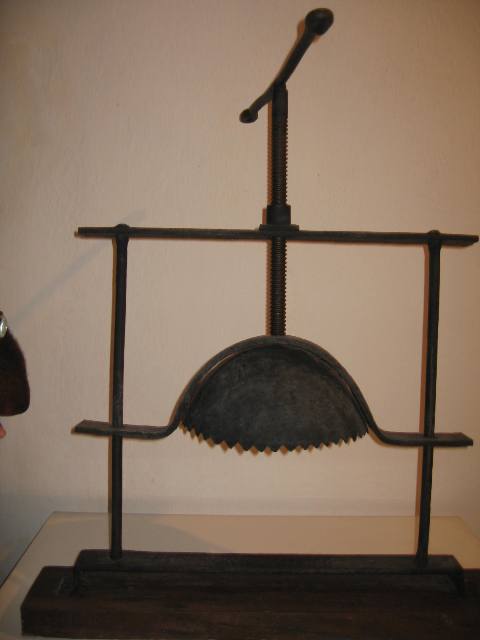

More torture devices with the ultimate at right (guillotine)
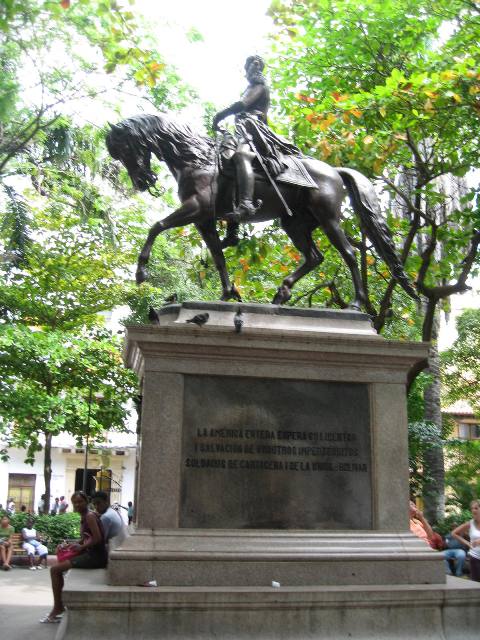
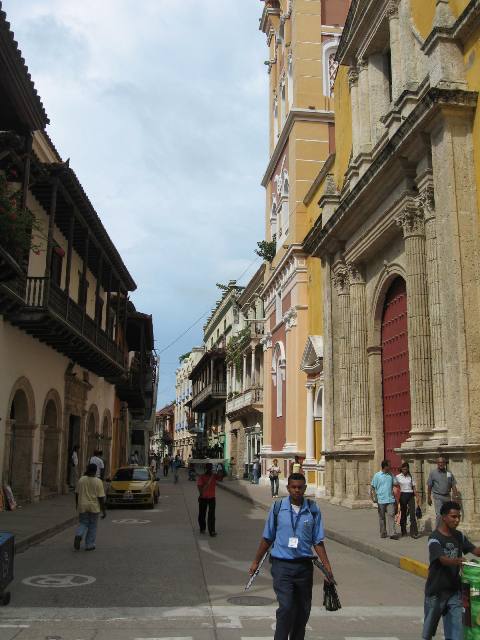
Walking from the Inquisition Palace to San Pedro Claver Church, we went through Plaza Bolívar with there was a statue of El Libertador, Genl. Simón Bolívar (right). Next we passed by the main cathedral (left)
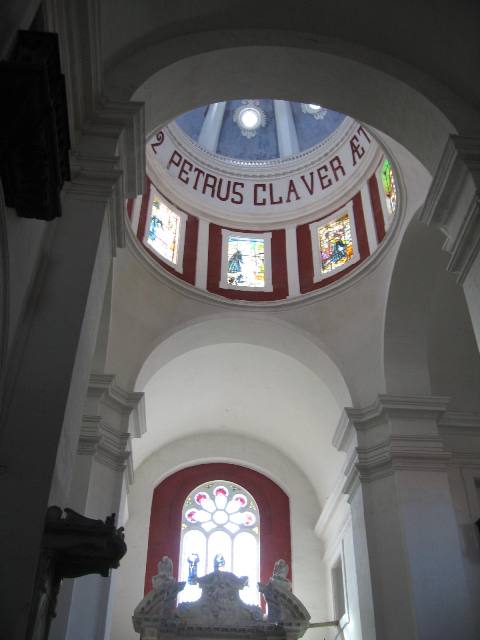
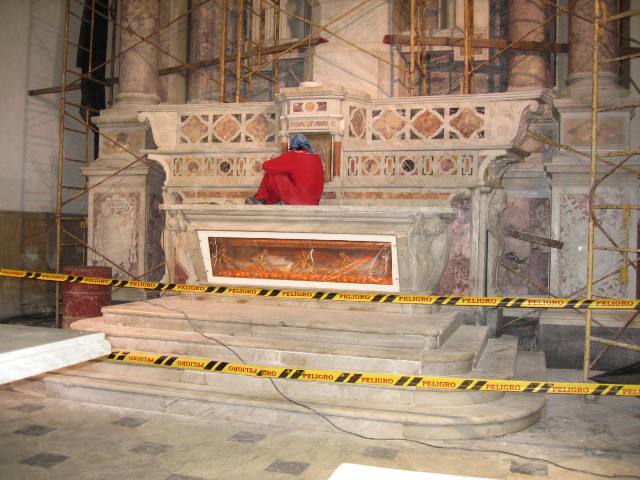
San Pedro Claver Iglesia. In the dome and the altar being reworked (the saint's bones are in the case at the base of the altar)

Street scene in square outside of San Pedro Claver

As always on a ship-sponsored tour, they stopped at a shop, this timeg for emeralds. We went down the street to a cafe and had a cool Cerveza Aguila
22 November 2008 - At Sea bound for Panama
Our dinner mates. We were fortunate to be assigned a table with nine great companions. They all wore the same t-shirt which proudly proclaimed "SAIL FIRST CLASS OR YOUR HEIRS WILL"
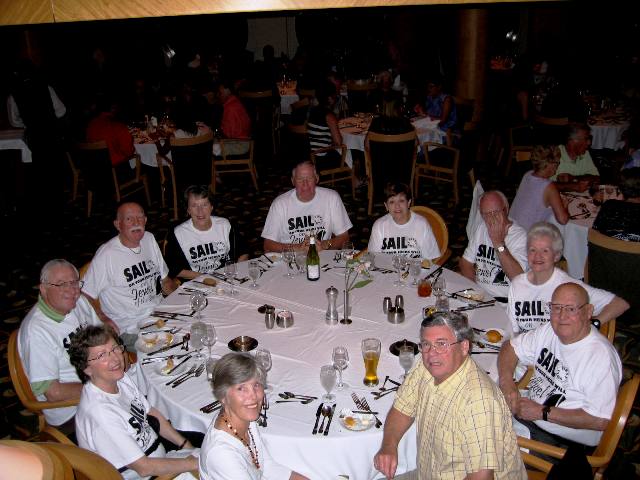
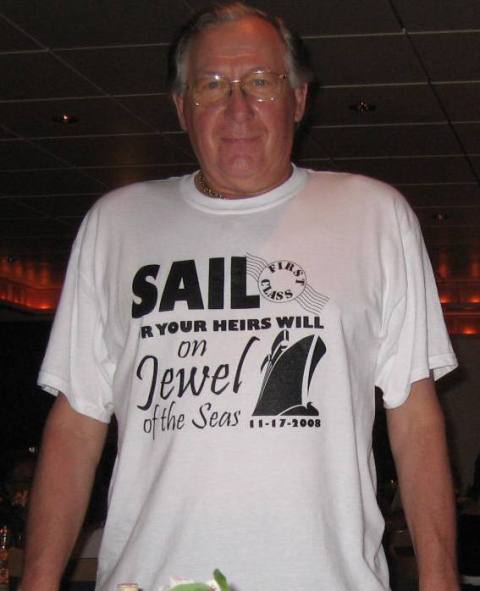
Left center to right - Marilyn, Gwen, Dean, Don, Gloria, Ron, Mary Rose, Bill, Edna, Norb, Phil. Ron is modeling the t-shirt.
23 November 2008 - Transiting the Panama Canal
We entered the Gatun Locks on Panama's Caribbean coast. We did a partial transit to Gatun Lake. There were three locks, the first two raised the ships 27 feet and the third 32 feet, for a total of 86 feet. The Canal has two sets of locks and around 400 ships a day use the Canal to avoid having to sail down South America and around Cape Horn. The Canal was completed in 1914. The US operated the Canal until 1977 when Jimmy Carter gave the canal to Panama effective 1999. I believe it is now operated by a Red Chinese company called COSCO.
The Canal locks are 1000 feet long and 100 feet wide. Most ships up to now have been built to accommodate the Canal. These ships are called Panamax ships. Panama has started work on building another canal with larger locks for Post-Panamax ships.
The French under Ferdinand deLesseps, builder of the sea level Suez Canal, started a Canal in the 1880s but construction was abandoned after some 20,000 laborers died from Yellow Fever. At this time Panama was a department of Colombia. The US first considered building a canal through Nicaragua but these efforts were defeated when Nicaragua issued a postage stamp picturing a steaming volcano near the proposed route. The French were anxious to sell their land holdings to the US which finally was done. Panama sought independence from Colombia at the urging of the US. The US paid Colombia $25 million to compensate her for the loss. Dr. Walter Reed found that yellow fever was carried by mosquitoes. Controlling the insects was the key to completing the Canal. The US controlled the Canal Zone until Carter gave the Canal away.
This is the only place in the Western Hemisphere where the sun rises over the Pacific Ocean instead of the Atlantic due to the layout of the Canal!
We arrived at Colon early in the morning under a continuing light rain.

Sunrise over the Pacific from the Caribbean at Colon
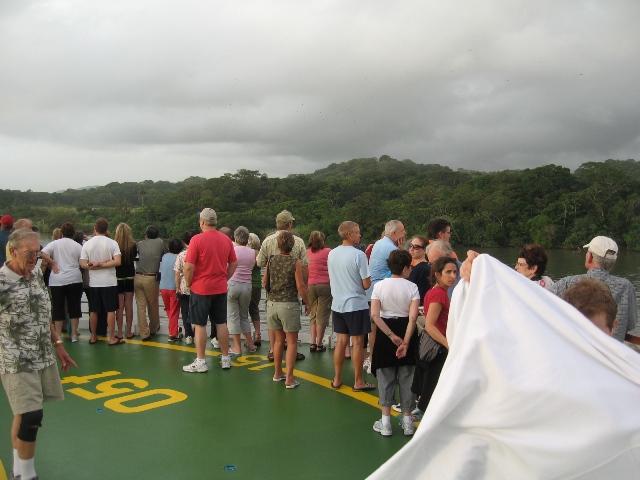
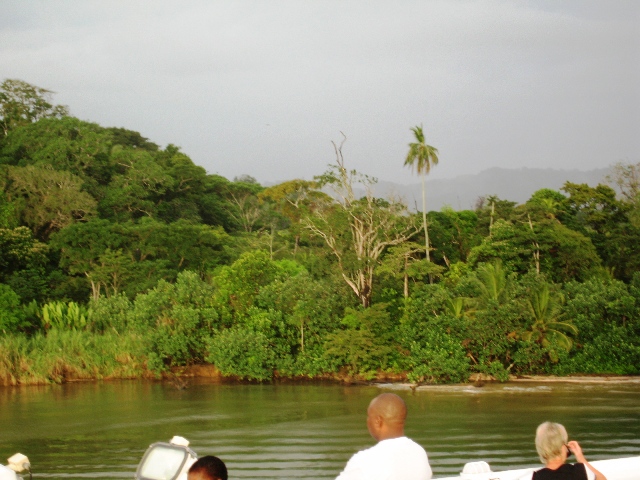
Passengers congregating on the foc'sle. Panama scenery.
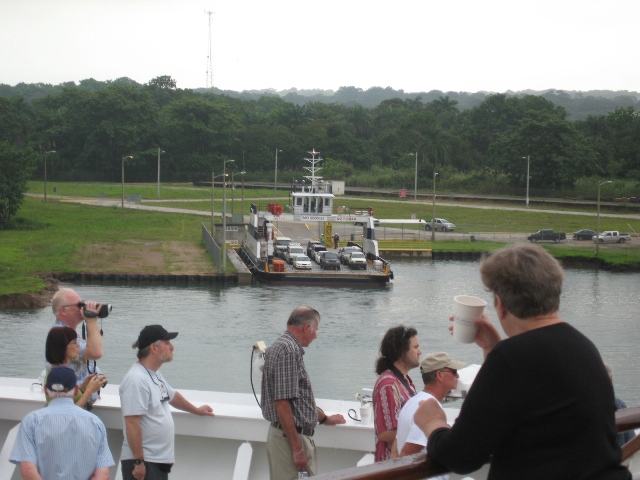
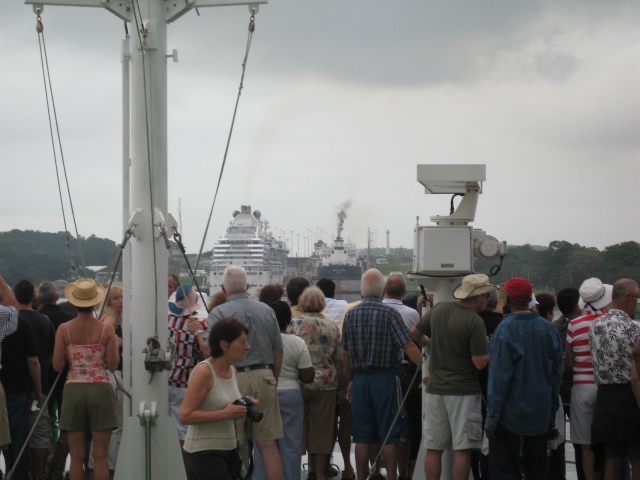
Ferry across the Canal. Approaching the first lock. We were about to enter the right hand lock now occupied by a tanker the Energy Champion out of Douglas (Isle of Man). The Coral Princess out of Hamilton (Bermuda), another cruise ship is entering the left lock
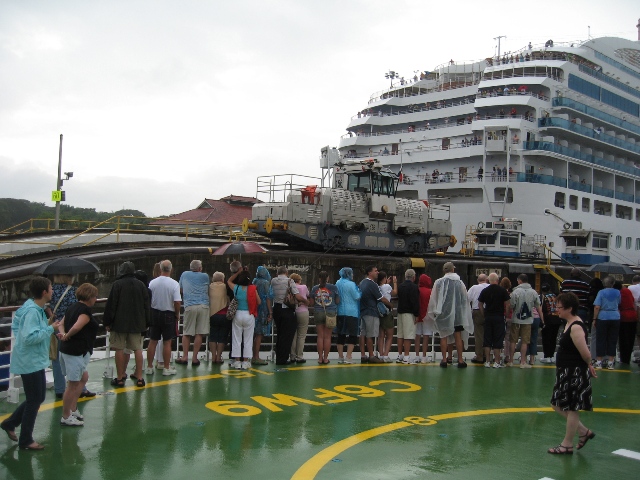
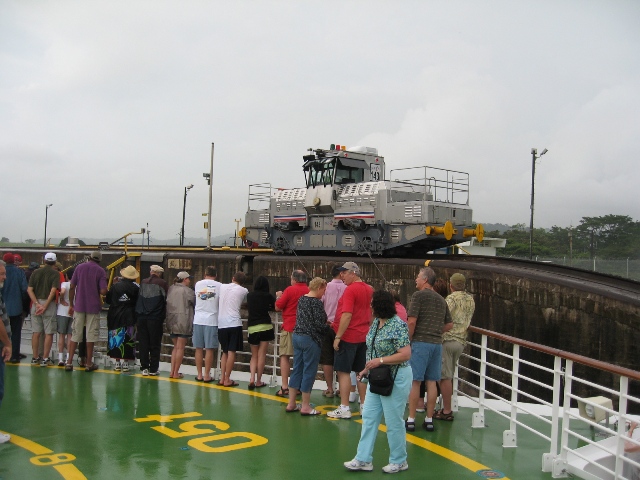
The "mules" are electric locomotives than take up lines to the ship to keep her in the center of the lock as the ship steams in
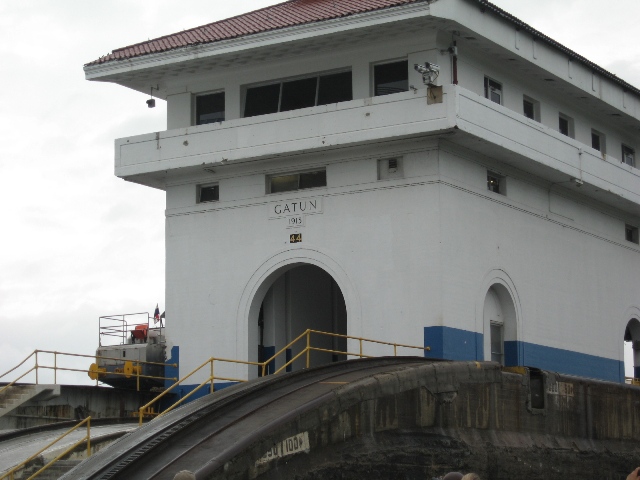

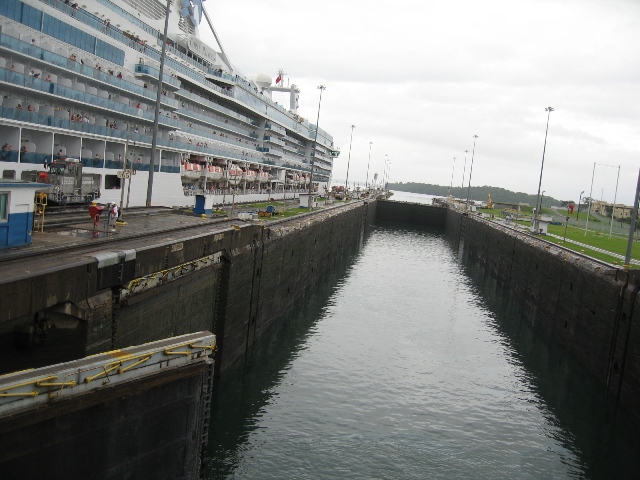
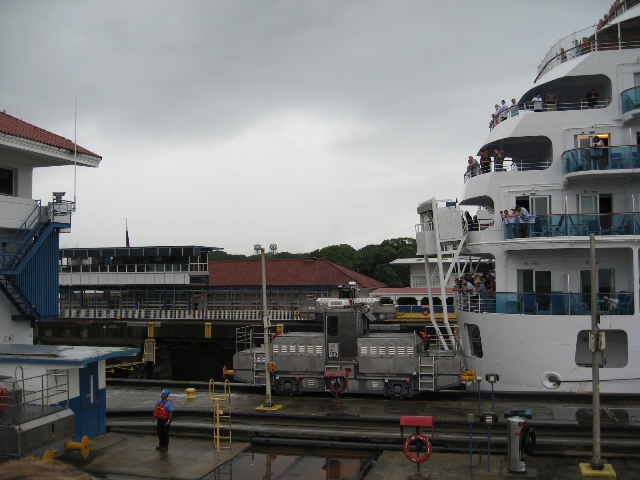
Transiting the Canal
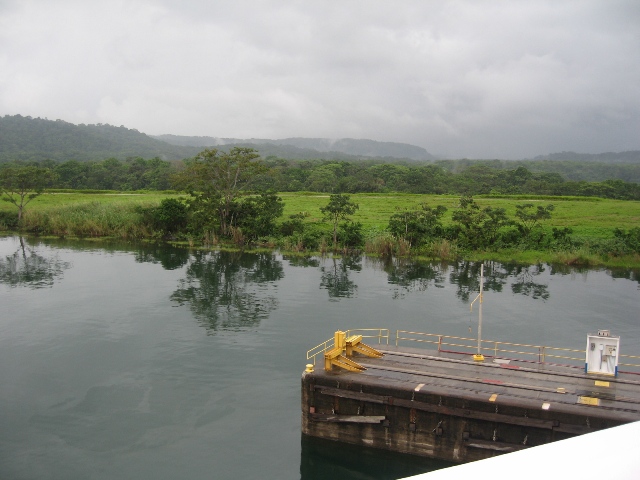
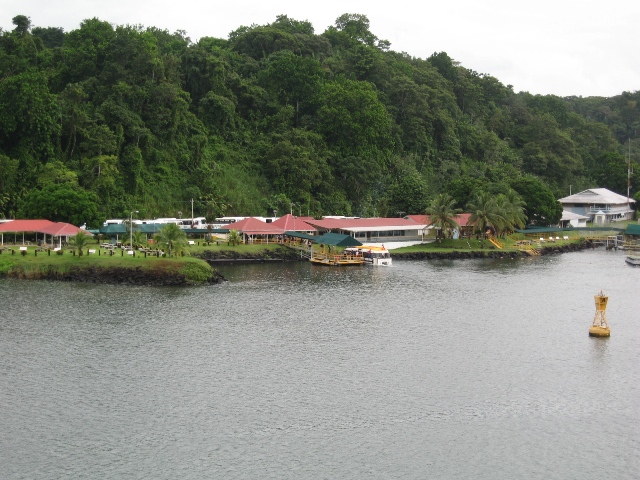
Entering Gatun Lake. At left, the old Yacht Club
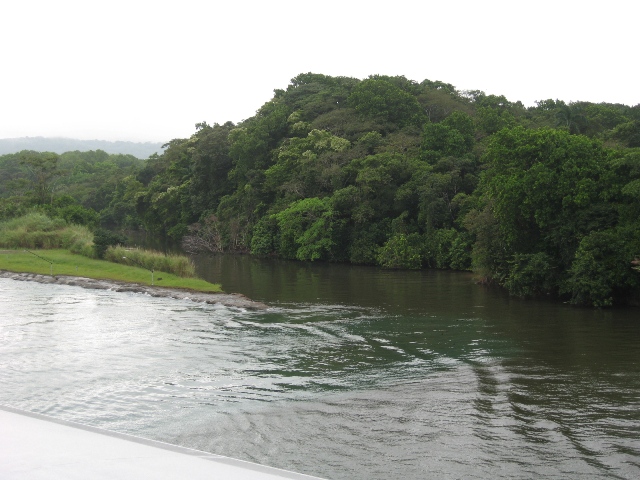
Part of the attempted French canal
23 November 2008 - Cristobal Pier, Colon, Panama
We tied up at Cristobal Pier for about four hours. The pier had a large shed where local Indians sell their wares. We finally stopped at a cantina that featured local talent while we sampled the local brew.
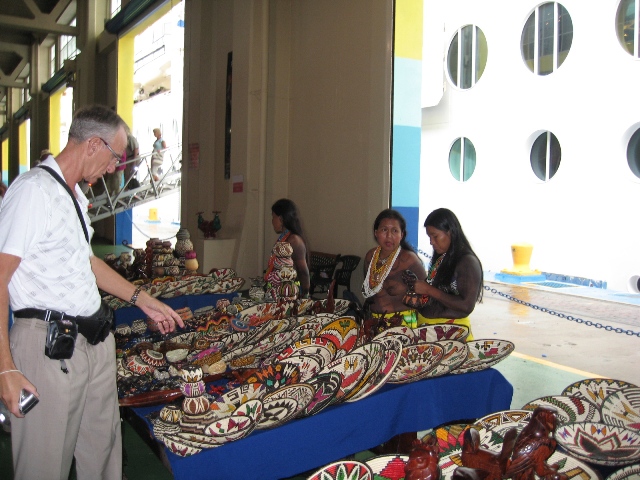
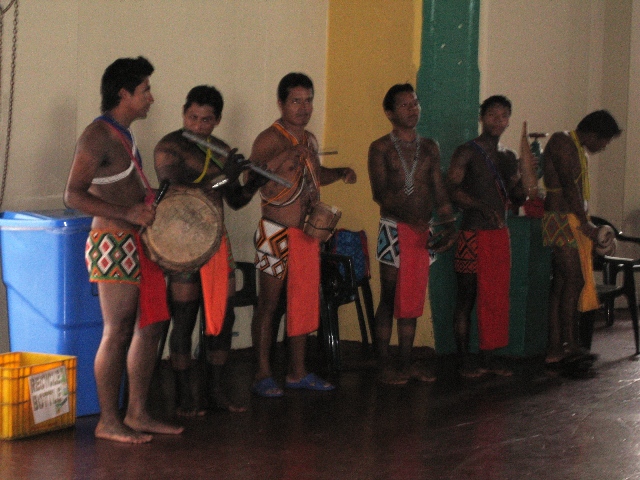
Bare chested Indian women at a stall (left). Local Indian musicians (right)
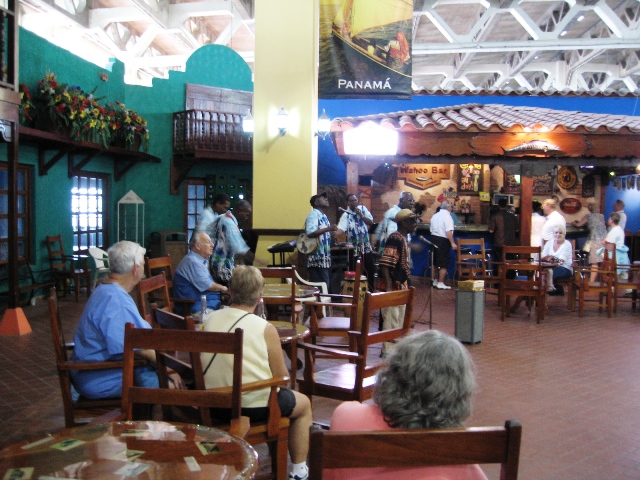

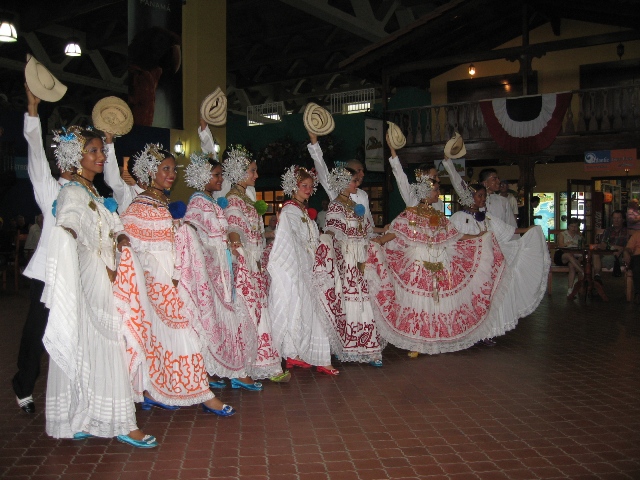
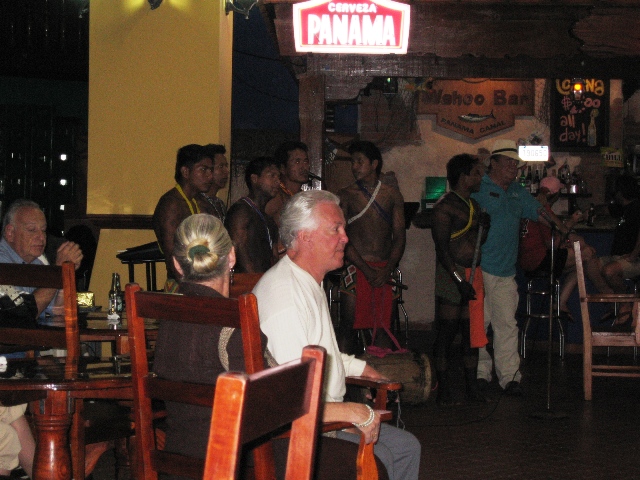
Calypso band, dancers, and Indian band at the Wahoo Bar
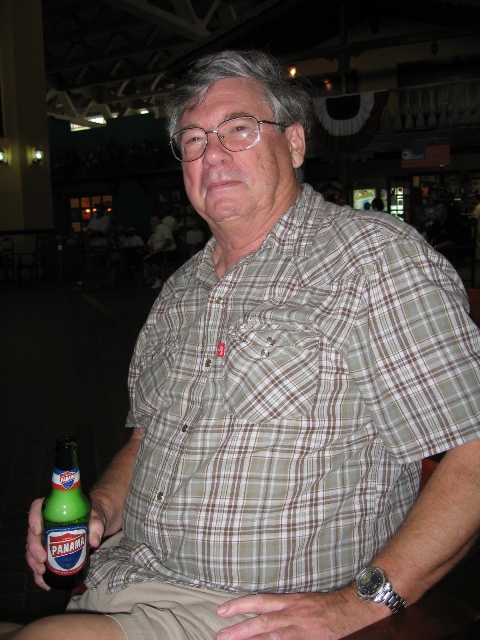

25 November 2008 - Montego Bay, Jamaica
Our next stop was supposed to be Puerto Limon, Costa Rica. Heavy rains caused landslides so the authorities closed the port. The cruise line was able to get permission to visit Montego Bay. We arrived at Montego Bay about mid-morning and we tied up at the quay. One of our fellow passengers from Canada lined up a driver and guide with a van for a three hour tour of the area. We joined them. Unfortunately, as we were returning and about a mile from the ship, the guide told us that we had misunderstood the price agreement! Instead of $10 per person for the tour, he informed us that it was $10 per hour per person, or $30 a head. Our Canadian friend was rather annoyed but asked us what we wanted to do. We agreed to pay $20 a head and the matter was settled.
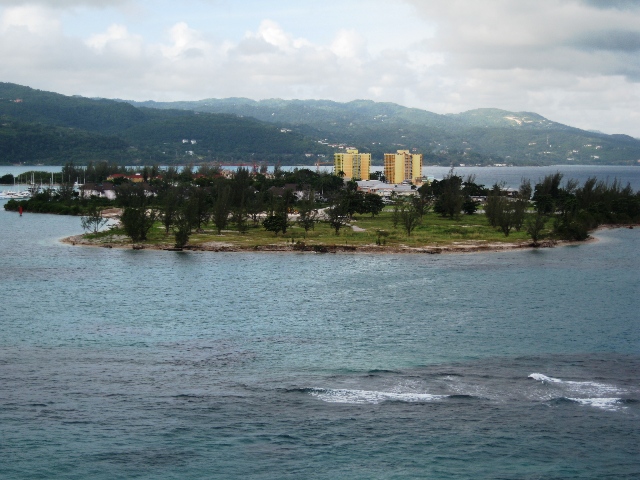

Approaching Montego Bay. Tying up at the Montego Bay Terminal Building and Shopping Mall

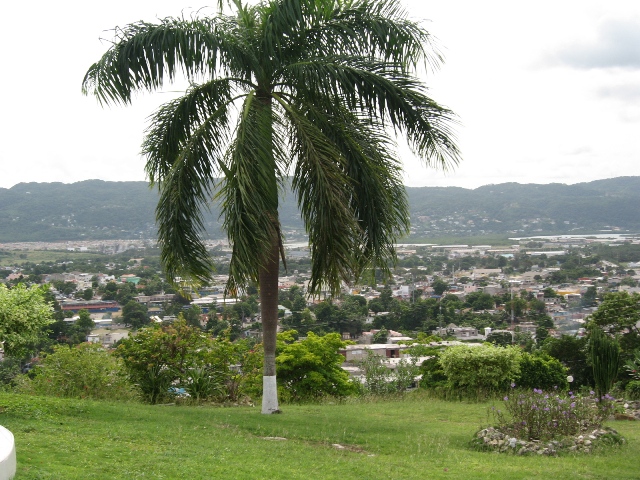
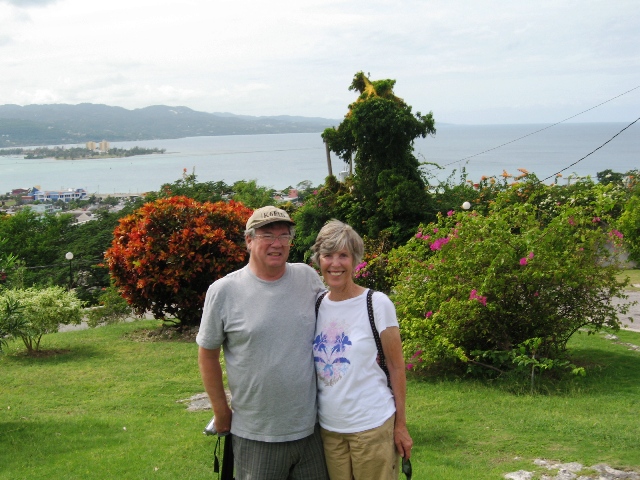
Montego Bay from Richmond Hill Plantation (our ship in background)
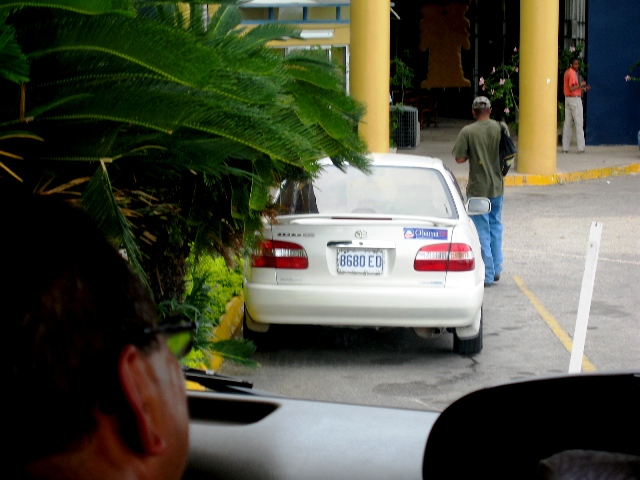
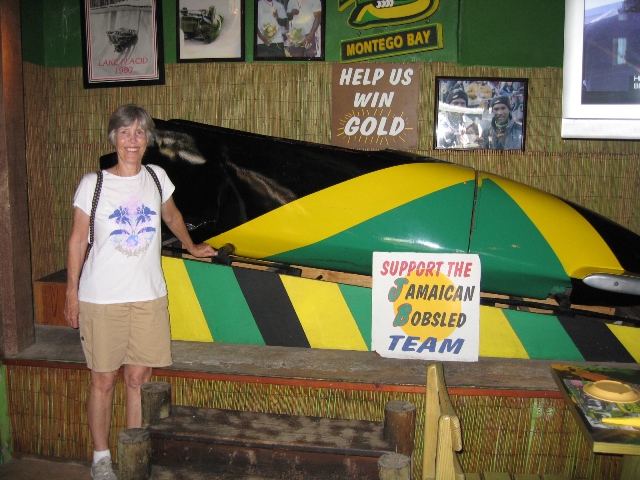
Now I see how Obama won! The Jamaicans were registered by his ACORN outfit. Here we are at the Bobsled Bar on Gloucester Street
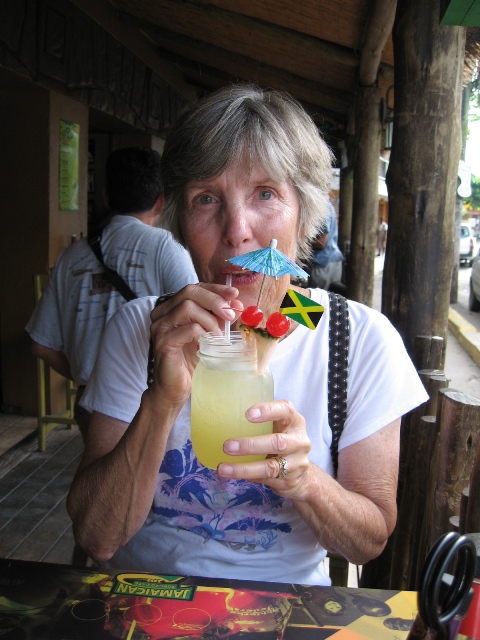
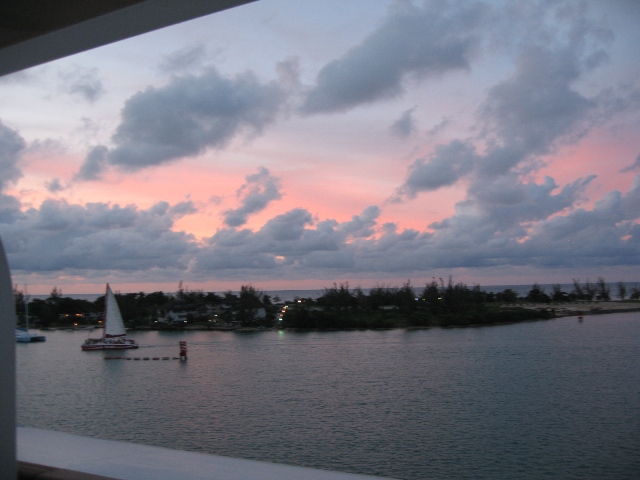
Marilyn enjoying a local drink. Sunset over Montego Bay
26 November 2008 - George Town, Grand Cayman Island
Our last stop was Grand Cayman. A nice clean town but expensive, much like Bermuda (I guess the English lordship has its advantages as most other island stops were dirty so Colonialism has its place). This island was originally called Tortuga and it is home to the Tortuga Rum Cake Company whose products are expensive but excellent tasting.


George Town. USCGC Reliance


Street scenes
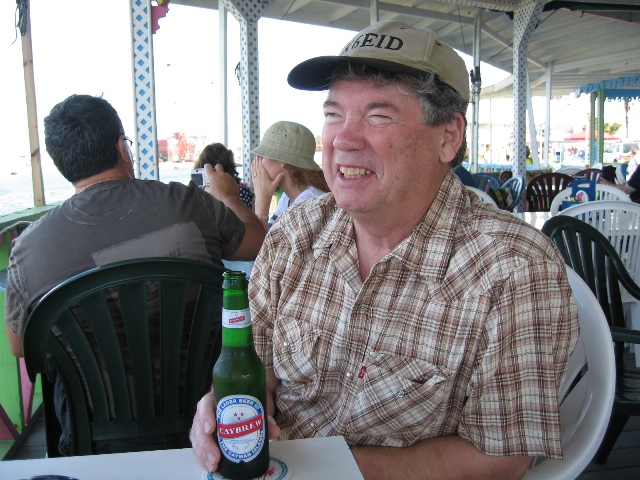
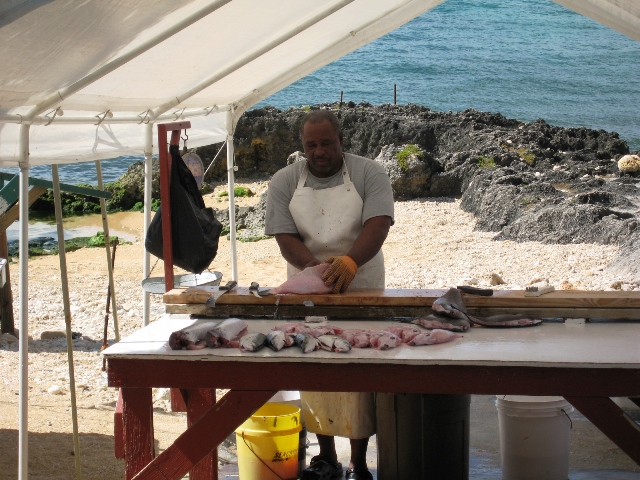
Sampling the local brew, Caybrew. Fisherman cleaning his catch

That's all, Folks!
RETURN to Home